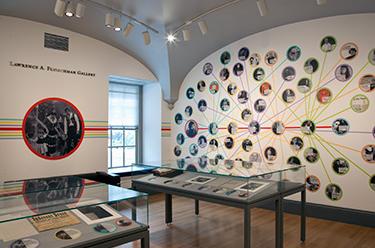Exhibition Chronology
Read the full chronology of exhibitions organized by the Archives of American Art.
Read the full chronology of exhibitions organized by the Archives of American Art.

The Archives of American Art’s exhibition space is located two blocks away from our D.C. Research Center in the Donald W. Reynolds Center for American Art and Portraiture (8th and F Streets NW).
Please visit www.si.edu/visit for more information and to review safety requirements before your visit.
Learn more about visiting the gallery.
Hours: Open daily 11:30 a.m.–7:00 p.m.
Admission: Free